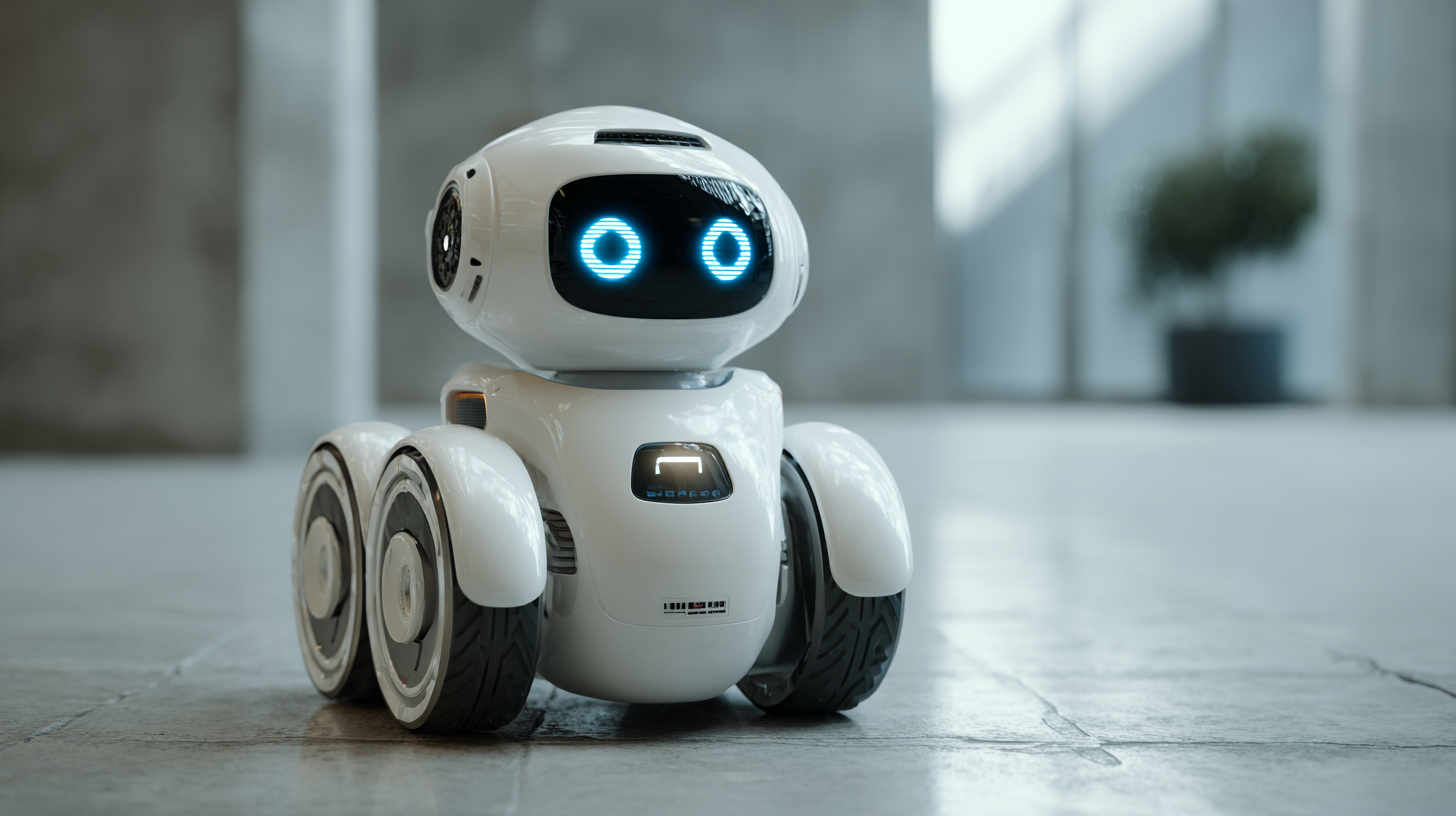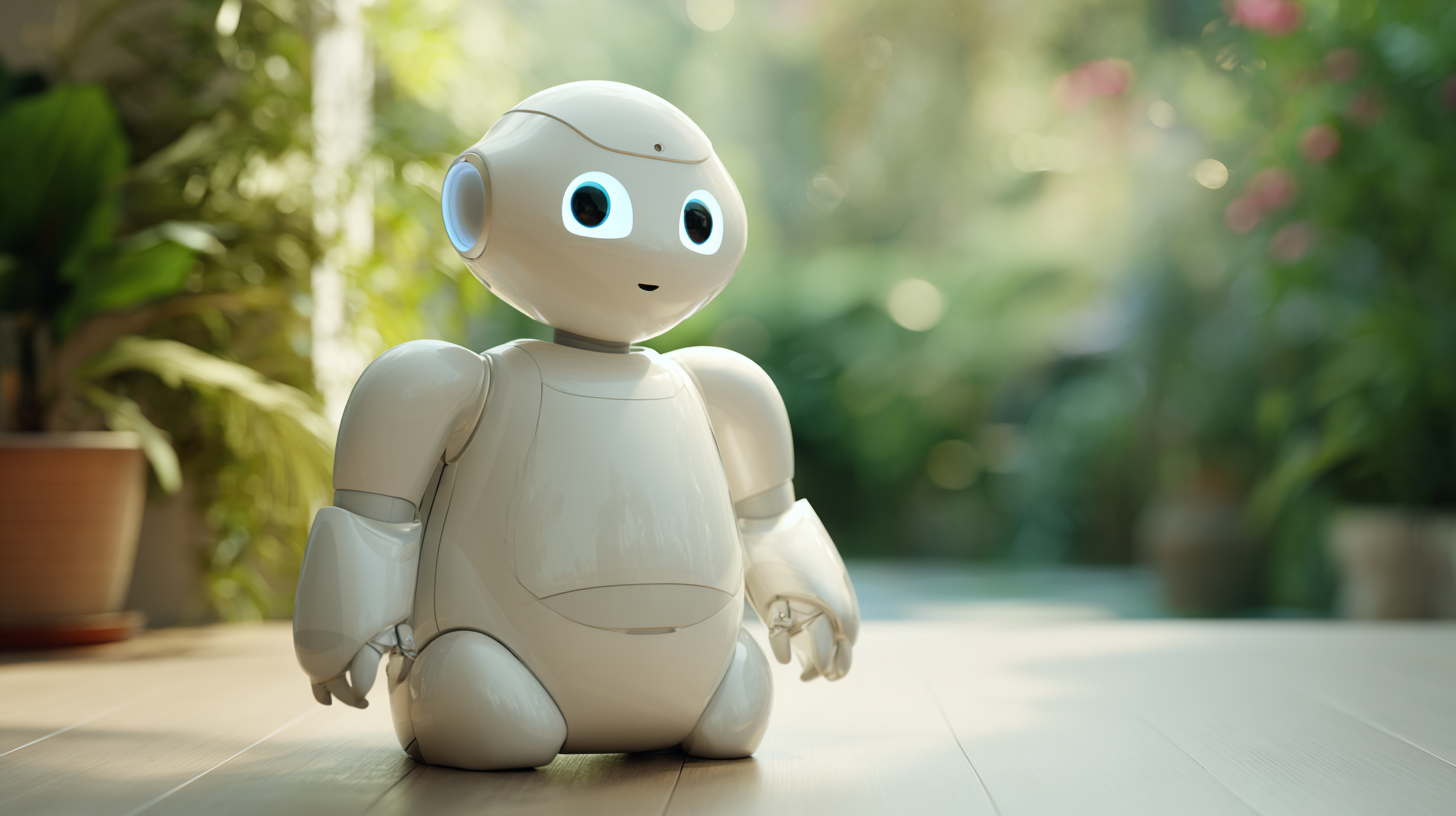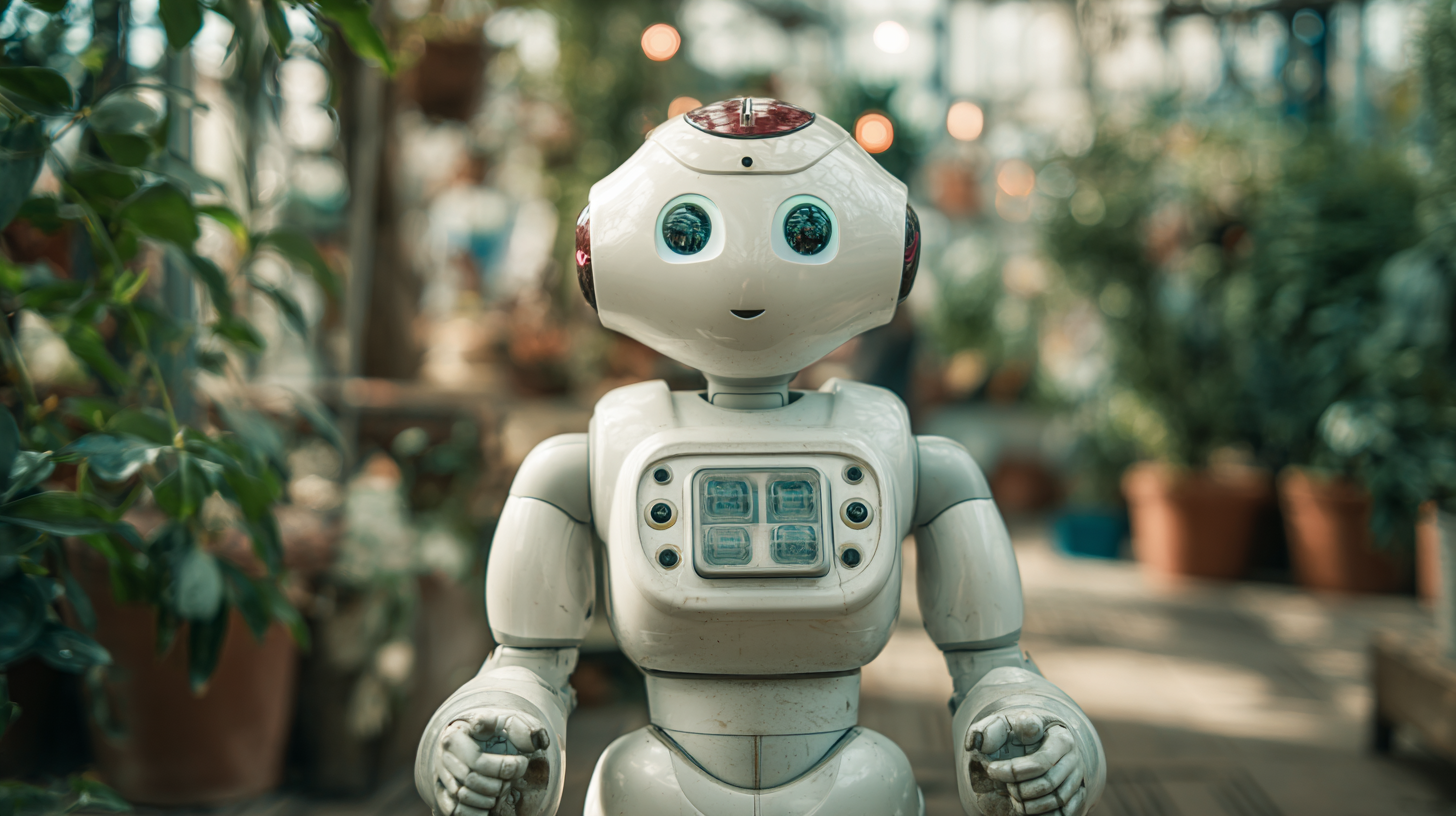Unlocking the Future: An Ultimate Guide to Choosing the Right Autonomous Robot for Your Business
In recent years, the integration of autonomous robots into business operations has seen exponential growth, driven by advances in technology and the increasing demand for efficiency across various industries. According to a report by McKinsey, businesses that deploy autonomous robots could see productivity gains of up to 20%, significantly enhancing their competitive edge.
Moreover, a study by the International Federation of Robotics indicates that the global market for autonomous robots is projected to reach $83 billion by 2023, representing a remarkable opportunity for companies looking to innovate and streamline their processes.

As organizations grapple with the decision of which autonomous robot best fits their needs, understanding the key factors that influence their effectiveness becomes crucial. This ultimate guide aims to provide essential insights and tips for choosing the right autonomous robot tailored to your business requirements, unlocking the potential for substantial operational improvements and sustainable growth.
Understanding the Different Types of Autonomous Robots for Business Applications
As businesses increasingly turn to automation to streamline operations, understanding the various types of autonomous robots available is crucial for making informed decisions. According to a report by MarketsandMarkets, the global market for autonomous mobile robots is expected to grow from $1.55 billion in 2021 to $4.80 billion by 2026, reflecting a compound annual growth rate (CAGR) of 25.2%. This surge indicates the rising demand for solutions that enhance efficiency and reduce operational costs.
Different business applications utilize distinct types of autonomous robots tailored to specific functions. For instance, autonomous guided vehicles (AGVs) are widely adopted in warehouses for logistics operations, helping to transport goods with minimal human intervention. Meanwhile, service robots are making strides in sectors like hospitality and medical care, offering not just convenience but also improved customer experience. Research from Statista reveals that service robots in the healthcare industry could reach up to $5.4 billion by 2025, underscoring the transformative potential of these technologies in enhancing service delivery. Understanding these distinctions can empower businesses to select the right type of robot that aligns with their operational goals and industry requirements.
Evaluating Industry-Specific Use Cases: Manufacturing, Logistics, and Healthcare
As industries evolve, the integration of autonomous robots offers transformative potential, particularly in manufacturing, logistics, and healthcare. A recent study revealed that collaborative robots in manufacturing can significantly enhance productivity and safety, as they work alongside human operators, reducing the likelihood of workplace injuries and streamlining production processes. For instance, manufacturers that invested in automation technologies witnessed up to a 20% increase in operational efficiency, enabling them to address ongoing skills gaps and innovate more effectively.
In the realm of logistics, the adoption of autonomous robots is reshaping supply chain dynamics. According to a logistics industry report, implementing automation solutions can decrease order fulfillment times by as much as 30%, significantly improving customer satisfaction and operational responsiveness. Moreover, as generative AI continues to advance, the economic potential of these technologies in logistics is projected to add trillions to global productivity. In healthcare, the introduction of AI-driven robots enhances drug discovery and manufacturing processes, illustrating a paradigm shift that aligns with evolving regulatory standards and quality control measures. The future of work in these sectors hinges on an intentional blend of human skill and robotic efficiency, promising to unlock unprecedented levels of productivity and innovation.
Autonomous Robot Market Analysis 2023
Key Technical Specifications That Impact Robot Performance and Efficiency
When selecting the right autonomous robot for your business, understanding key technical specifications is crucial for optimizing performance and efficiency. Essential factors include processing power, sensory capabilities, and adaptability. A robot equipped with advanced AI and high-performance processors can enhance decision-making and learning capabilities, allowing it to perform complex tasks in dynamic environments. Sensory systems, such as depth cameras, enable robots to navigate and interact with their surroundings more effectively, which is particularly beneficial in sectors like logistics and manufacturing where precision is key.

Moreover, the implementation of robotics is increasingly influenced by broader trends in automation technology. As industries face challenges like labor shortages and the demand for improved efficiency, understanding how automation impacts operations becomes vital. This includes recognizing the role of robots in augmenting human capabilities, particularly in environments that require safety and collaboration. As businesses adapt to innovations in robotics, aligning technical specifications with operational goals will be key to unlocking the full potential of these technologies and ensuring sustainable growth.
Analyzing Cost-Benefit Metrics for Implementing Autonomous Robots in Your Business
When considering the implementation of autonomous robots in your business, analyzing cost-benefit metrics is crucial for justifying the investment. According to a report by McKinsey & Company, companies that adopt automation technologies can increase their productivity by up to 30%. This substantial gain underscores the importance of conducting a detailed analysis of how these robots can streamline operations, reduce labor costs, and ultimately, enhance profitability.

Tips: Start by evaluating the specific tasks that can be automated and calculate the potential savings from reduced labor hours versus the upfront costs of the robotic systems. In a study by PwC, it was found that, on average, businesses can expect a payback period of less than 18 months when investing in robotic solutions. This statistic can serve as a benchmark when projecting the financial impact of automation.
Furthermore, consider the long-term benefits of implementing autonomous robots beyond just immediate cost savings. A report from Gartner indicates that enterprises utilizing automation and robotics can improve customer satisfaction rates by as much as 25% due to increased efficiency and reduced error rates. Investing in the right technology now can yield substantial competitive advantages as the market continues to evolve.
Future Trends in Robotics: Innovations Shaping the Next Generation of Autonomous Machines
The landscape of robotics is rapidly evolving, ushering in innovations that will redefine industries and enhance productivity. As we look toward the future, key trends include human-robot collaboration and advanced automation. By 2024, industrial robot installations are projected to reach a staggering value of $16.5 billion, highlighting the urgent need for businesses to adopt autonomous technologies. With over 4.28 million robots already in operation in factories worldwide, it is clear that these machines are no longer a futuristic concept but a present-day reality integral to operational efficiency.
Artificial intelligence continues to play a pivotal role in this transformation. It enhances precision and adaptability in manufacturing processes, enabling predictive maintenance and efficiency optimizations across various sectors. In the automotive industry, for instance, the integration of AI-powered robotics is not only improving precision in production lines but is also revolutionizing how vehicles are developed and manufactured. This evolution in robotics is not limited to manufacturing; from healthcare to construction, the impact of autonomous machines is reshaping our approach to efficiency, safety, and innovation. As service robots begin to perform a range of tasks, assisting humans in various environments, it's clear that the next generation of autonomous machines will unlock enormous potential across multiple sectors.
Unlocking the Future: An Ultimate Guide to Choosing the Right Autonomous Robot for Your Business
| Robot Type | Primary Function | Industry Applications | Expected ROI (%) | Future Trend |
|---|---|---|---|---|
| Delivery Robot | Last-Mile Delivery | E-commerce, Retail | 15-30% | Increased Automation in Logistics |
| Industrial Robot | Manufacturing | Automotive, Electronics | 25-50% | Collaborative Robotics |
| Service Robot | Customer Service | Hospitality, Retail | 10-20% | AI-Enhanced Interactions |
| Agricultural Robot | Crop Monitoring | Farming, Agriculture | 20-35% | Precision Agriculture |
| Healthcare Robot | Patient Delivery | Healthcare, Hospitals | 15-25% | Telemedicine and Robotics |
Related Posts
-

Ultimate Guide to Mastering Agile Robotics for Business Success
-

Maximizing Efficiency with Logistics Robotics A Comprehensive How to Guide
-

The Future of Robotics Automation Transforming Industries with Data Driven Innovations
-

Challenges Faced by Industries Embracing Robotics and Automation
-

Robotics Automation: A Comparative Analysis of Leading Solutions for Global Buyers
-

5 Best Innovations in Robotics Automation Transforming Industries